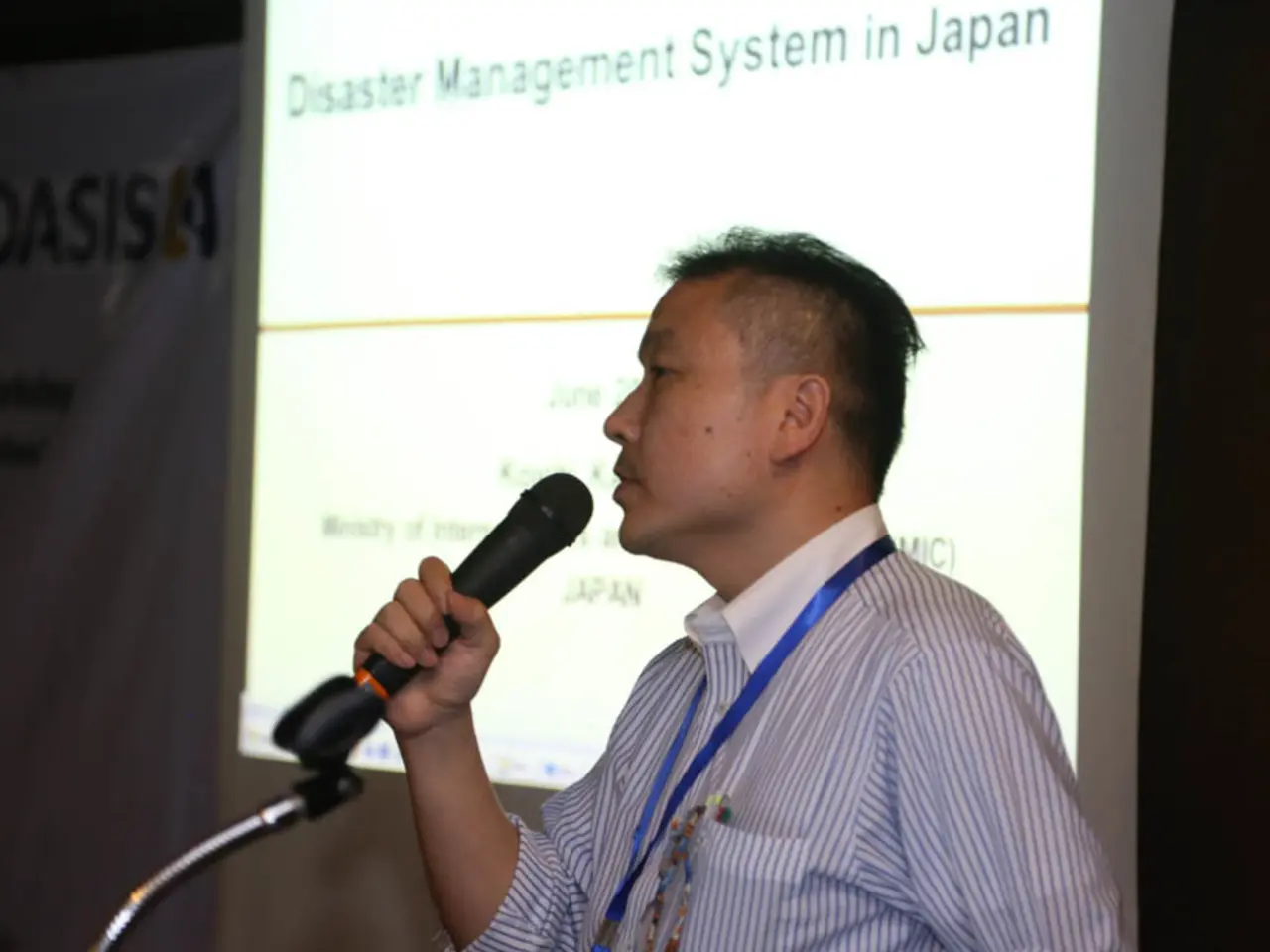Storm Alert Announced for Certain Areas within Kumamoto Province Due to Heavy Rainfall
The southwestern region of Japan, particularly Kumamoto Prefecture, is currently facing a heavy rain emergency due to record-breaking rainfall leading to severe flooding, landslides, and widespread disruption.
On Monday, the Japan Meteorological Agency issued a heavy rain emergency warning for the city of Tamana and the town of Nagasu in Kumamoto prefecture at 12:20 a.m. Linear precipitation zones, or strings of developed rain clouds that often bring torrential rain, have formed in Kumamoto and some other prefectures in the Kyushu southwestern region.
The agency has urged immediate safety measures due to a high possibility of flooding and other disasters in the mentioned areas. Over 3 million people in southwestern Kyushu have been issued evacuation advisories or warnings, with around 384,000 residents under the highest-level evacuation warning.
Kumamoto has recorded over 581 millimeters of rain over several days, more than three times the average August rainfall. Tamana City saw 404 millimeters in 12 hours and a record 37 centimeters in just six hours. Severe flooding has submerged residential areas up to 1 meter deep, causing heavy damage to roads and infrastructure, and many vehicles have been swept away or trapped.
At least six people are confirmed dead, five remain missing, and several injuries have been reported due to flooding and landslides. Rescue operations continue, with some individuals trapped under debris or in rivers.
The Japan Meteorological Agency initially issued the highest level (level-5) heavy rain emergency warning but has since downgraded it for some areas to level-2 or level-3. However, officials caution that ground conditions remain unstable, increasing landslide risk. Transport services, including the Shinkansen in northern Kyushu, were suspended but some have resumed as rain intensity fluctuates.
The situation remains serious due to ongoing heavy rain forecasts, and the government, led by Prime Minister Shigeru Ishiba, is mobilizing resources for emergency response and damage assessment. By 8:10 p.m. on Sunday, the 24-hour rainfall total in Munakata, Fukuoka Prefecture, reached 414.5 millimeters, renewing a record high at that location. In the city of Kikuchi, Kumamoto, rainfall over the three hours until midnight on Sunday totaled 211.5 millimeters.
[1] Japan Today. (2022, August 7). Heavy rain emergency in Kumamoto, Japan: Flooding, landslides, and evacuation orders. Retrieved from https://japantoday.com/category/national/heavy-rain-emergency-in-kumamoto-japan-flooding-landslides-and-evacuation-orders
[2] Kyodo News. (2022, August 7). At least six dead in heavy rain emergency in southern Japan's Kumamoto. Retrieved from https://www.kyodonews.net/news/2022/08/4f4f62d7f62d-at-least-six-dead-in-heavy-rain-emergency-in-southern-japan-s-kumamoto.html
[3] NHK World. (2022, August 7). Heavy rain emergency in southern Japan: At least six dead, hundreds missing. Retrieved from https://www3.nhk.or.jp/nhkworld/en/news/20220807_12/
[4] The Mainichi. (2022, August 7). Heavy rain emergency in southern Japan: At least six dead, hundreds missing. Retrieved from https://mainichi.jp/english/articles/20220807/p2a/00m/0na/030000c
[5] The Asahi Shimbun. (2022, August 7). Heavy rain emergency in southern Japan: At least six dead, hundreds missing. Retrieved from https://www.asahi.com/ajw/articles/14284146
Researchers and media outlets are closely monitoring the environmental-science aspect of this weather disaster in southern Japan. The heavy rain emergency, caused by record-breaking rainfall, not only poses a threat to the environment through flooding and landslides but also impacts the science community by disrupting research in Kumamoto Prefecture.






